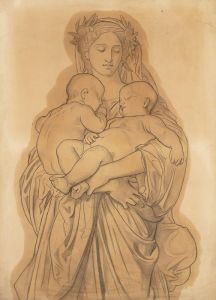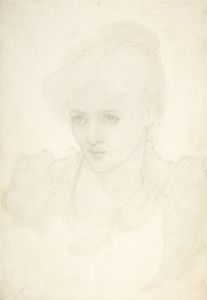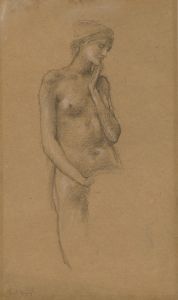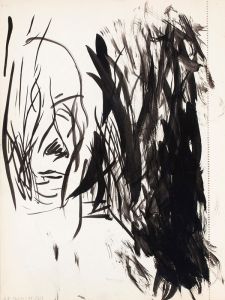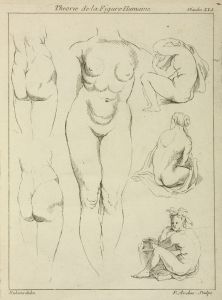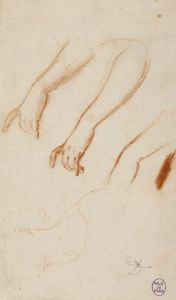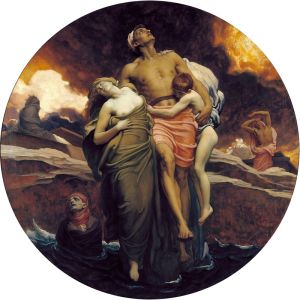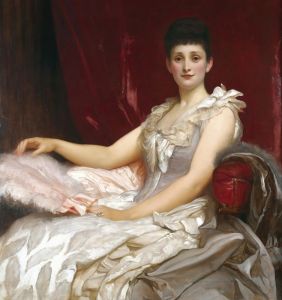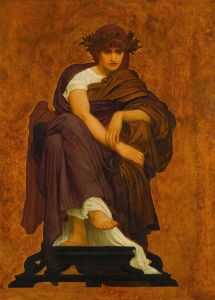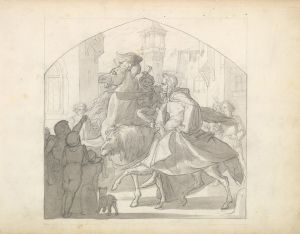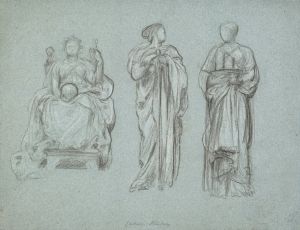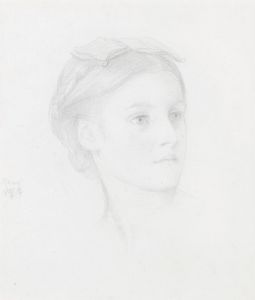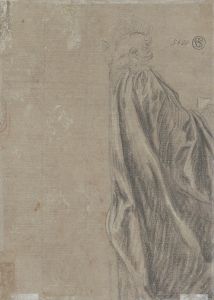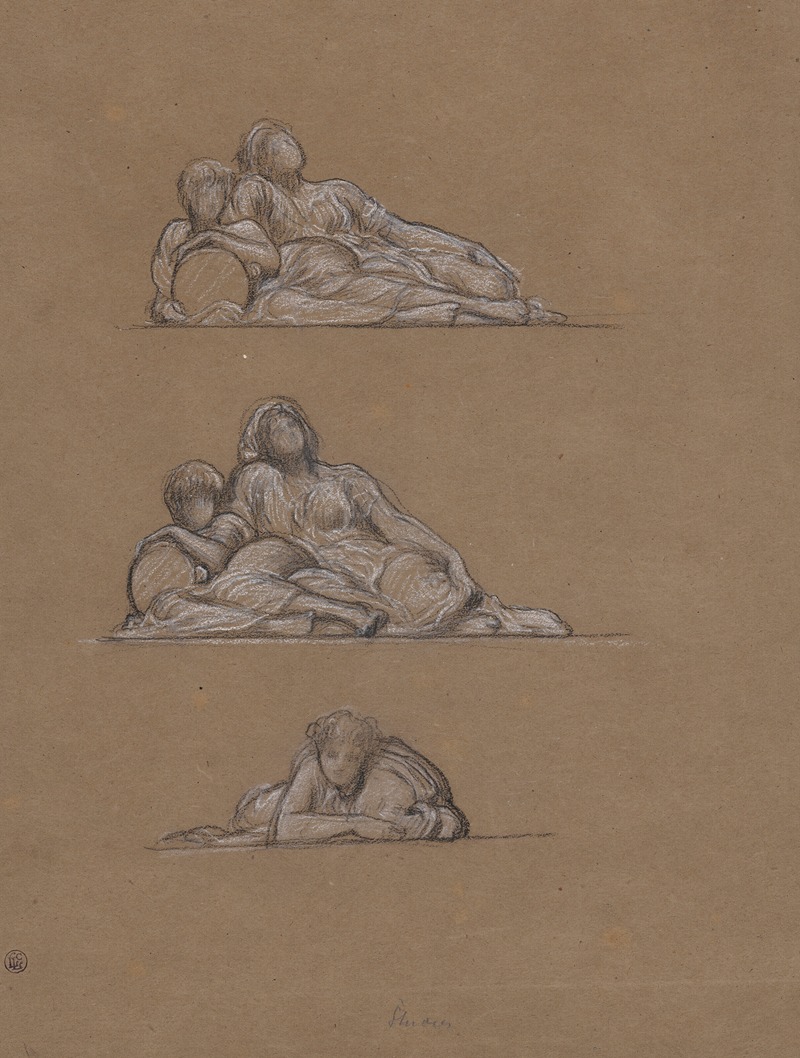
Three figure studies for ‘The Dance’
A hand-painted replica of Frederic Leighton’s masterpiece Three figure studies for ‘The Dance’, meticulously crafted by professional artists to capture the true essence of the original. Each piece is created with museum-quality canvas and rare mineral pigments, carefully painted by experienced artists with delicate brushstrokes and rich, layered colors to perfectly recreate the texture of the original artwork. Unlike machine-printed reproductions, this hand-painted version brings the painting to life, infused with the artist’s emotions and skill in every stroke. Whether for personal collection or home decoration, it instantly elevates the artistic atmosphere of any space.
"Three Figure Studies for ‘The Dance’" is a preparatory drawing by the renowned British artist Frederic Leighton, 1st Baron Leighton (1830-1896). Leighton was a leading figure in the Victorian art world, known for his academic style and his role as President of the Royal Academy of Arts from 1878 until his death.
This particular work, "Three Figure Studies for ‘The Dance’," showcases Leighton's meticulous approach to composition and his dedication to classical themes. The drawing is a preparatory study for a larger painting, "The Dance," which exemplifies Leighton's interest in movement, form, and the human body. The study features three figures, each captured in different poses that suggest motion and grace, reflecting Leighton's classical training and his admiration for the art of ancient Greece and Rome.
Leighton's preparatory studies were an essential part of his artistic process. He often created numerous sketches and studies before embarking on a final painting. These studies allowed him to explore different compositions, refine his understanding of anatomy, and perfect the poses and expressions of his figures. In "Three Figure Studies for ‘The Dance’," Leighton's skill in draftsmanship is evident, with precise lines and careful shading that bring the figures to life on paper.
The figures in the study are depicted with a sense of fluidity and elegance, characteristic of Leighton's work. The artist's ability to convey movement and emotion through his drawings was highly regarded, and this study is a testament to his talent. The figures appear to be engaged in a dance, their bodies twisting and turning in a harmonious rhythm. This focus on dance and movement is a recurring theme in Leighton's oeuvre, reflecting his fascination with the beauty and expressiveness of the human form.
Leighton's work was heavily influenced by his travels and his exposure to different artistic traditions. He spent time in Italy, where he studied the works of Renaissance masters, and in Paris, where he was influenced by contemporary French artists. These experiences enriched his artistic vision and contributed to the development of his distinctive style.
"Three Figure Studies for ‘The Dance’" is part of Leighton's broader body of work that includes paintings, sculptures, and drawings. His contributions to the art world were significant, and his legacy continues to be celebrated today. Leighton's works are held in major collections around the world, including the Leighton House Museum in London, which was his former home and studio.
In summary, "Three Figure Studies for ‘The Dance’" by Frederic Leighton is a preparatory drawing that exemplifies the artist's skill in capturing movement and form. It reflects his classical training, his meticulous approach to composition, and his enduring fascination with the human body. This study is an important piece within Leighton's extensive oeuvre, showcasing his talent and his contributions to Victorian art.





